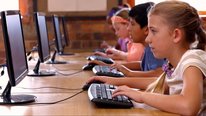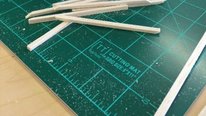See Related: Broadening Participation
- Priya Mohabir
- http://nysci.org/nysci_people/priya-mohabir/
- Director, Alan J. Friedman Center for the Development of Young Scientists
- Innovation Institute
- http://nysci.org/innovation-institute/
- New York Hall of Science
- Truck McDonald
- Manager of Training and Content
- Innovation Institute
- http://nysci.org/innovation-institute/
- New York Hall of Science
- David Wells
- http://nysci.org/nysci_people/david-wells/
- Director of Maker Programming
- Innovation Institute
- http://nysci.org/innovation-institute/
- New York Hall of Science
Public Discussion
Continue the discussion of this presentation on the Multiplex. Go to Multiplex









Jorge Solis
Assistant professor
I really like the idea of developing inquisitive observation skills to address local quality of life issues. I constantly use funds of knowledge theory in my courses and was wondering if you could share some ways you promote these observation skills with diverse high schoolers?
Priya Mohabir
Director, Alan J. Friedman Center for the Development of Young Scientists
Hi Jorge –
I like that you are tapping into engaging families, not something we have tried yet. One the ways that we try to develop observation skills is by helping them think about what are the different categories of data they are observing and using a framework for observations and data collection. The framework prompts users to record observation under the headings of Activities, Environments, Interactions, Objects, and Users (AEIOU). We also prompt data collection through video and pictures, engaging the participants to use the tools at hand (their phones!).
Jorge Solis
Assistant professor
Love the acronym (AEIOU) goes with Spanish language vowels. Where can we go to learn more about the tools and materials you are using?
Marcelo Worsley
Assistant Professor
I’m very curious to know more about the impact that this has on the students. It sounds like it could be truly transformative for students in the community.
Is there any connection between the Innovation Institute and the students’ in-school learning, or have you seen instances where student work in the Innovation Institute starts to bleed into their everyday practices?
Priya Mohabir
Director, Alan J. Friedman Center for the Development of Young Scientists
Hi Marcelo –
What a perfectly timed question! I just ran into a student from the first cohort of this program where he shared how much being a part of this program has inspired him and how he’s continued to explore Maker programs to work with youth like himself. He is now wrapping up his freshman year in college and working for an emerging company called MakerState that does a lot of similar programming with elementary school students. The data collected from the program shows that students have an increased interest in pursuing STEM careers, but it’s these anecdotal stories that really show how much of an impact the work they have been doing has had on them!
Shannon Carlin-Menter
This program is exactly what undeserved and disadvantaged students need… something meaningful to them and something that will directly impact their community.
Have you thought about how a program like this could be integrated into the NYC public school system?
Priya Mohabir
Director, Alan J. Friedman Center for the Development of Young Scientists
Hi Shannon –
We are currently trying to think about creating a more sustainable model of the program. As it sits, it’s a 15-month commit and that’s a long time to ask of a HS student. We are playing around with some alternative models but have not thought about how it could be integrated in the public school system. Have you had success in moving programs from out of school time to an in school program?
Margaret Mohr-Schroeder
I love your approach of cross-disciplinary STEM…that’s what it’s all about! How do you recruit students into your program? Do they come back each year or do you have a new set of students? Are you tracking them to see if they do go into a STEM field in college or after they graduate from high school?
Priya Mohabir
Director, Alan J. Friedman Center for the Development of Young Scientists
Hi Margaret –
One of the challenges we had was in recruitment strategies and in our current program we are recruiting students to be Innovation Institute Interns, making this more about an experience to them that is valuable work experience (they help support some of our educational programs) that is also a great learning opportunity. Students don’t repeat the program, but commit for a period of 15 months. We know what students have gone on to major in a STEM field – those that were seniors when they participated, and are now reaching out to learn more about where this next graduating class is heading to.
Michel DeGraff
Professor
This is such an exciting project. As a linguistics profesor at MIT, directing a STEM initiative in Haiti, and because of a Forum I recently participated in (called “What is education for?”), I’ve been thinking/asking a lot about the traditional divide between STEM and the Humanities, and various ways to bridge that divide in constructive ways. One such way may involve enlisting STEM in building up more robust political participation among students. Do you see ways in which the Innovation Institute could contribute to such efforts? (For more details on this important discussion about the STEM-Humanities “marriage,” the Forum is online at http://bostonreview.net/forum/danielle-allen-wh... )
Priya Mohabir
Director, Alan J. Friedman Center for the Development of Young Scientists
Hi Michael –
That was a great article! In the program we have not been talking about the affect or effect of political issues, but that would be an interesting addition. Given the research cited in the article, it would only benefit the participants to integrate a piece if that into our discussions. One of the ways we can do that is by looking into the local policies that guide some of the decision making. One big area would just be looking at political zones and distribution of resources to see if problems that affect our local neighborhood show up in other places or if there is a change in the resources allocated to surrounding neighborhoods. That would help them identify another layer of influence over the decisions that impact the community.
Michel DeGraff
Professor
Hello Priya, I’m glad you found the article helpful. Yes, I too agree that the political dimension would add value to your project. Indeed the nexus between problem solving, innovation, entrepreneurship and local communities is rich with possibilities for political action toward the greater good, with STEM helping shape better policies, bottom up… It’s been an enriching conversation, and I wish you and your team all the very best!
Further posting is closed as the showcase has ended.